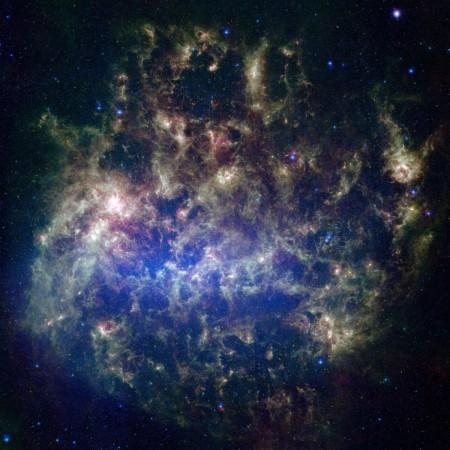
A new study report has suggested that the Milky Way galaxy, in which we live, will collide with the Large Magellanic Cloud (LMC), much earlier than previously thought. Earlier, researchers had found that spiral galaxy Andromeda will plow into the milky way in a cosmic collision event that will happen about five billion years from now.
However, the new study report suggests that the gigantic collision with Large Magellanic Cloud will happen within the next 2.5 billion years, much earlier than the expected epic Andromeda event.
Milky Way to devour Large Magellanic Cloud
Milky Way which is more than 1,00,000 light-years wide is much bigger and mightier than the LMC. The LMC is just 14,000 light-years wide, and when these two space entities collide, the Milky Way will eat the Large Magellanic Cloud without any kindness.
The research report published in the journal, Monthly Notices of the Royal Astronomical Society, revealed that this cosmic collision will create real havoc on our galaxy.
"The destruction of the Large Magellanic Cloud, as it is devoured by the Milky Way, will wreak havoc with our galaxy, waking up the black hole that lives at its center and turning our galaxy into an active galactic nucleus or quasar. This phenomenon will generate powerful jets of high-energy radiation emanating from just outside the black hole," said Marius Cautun, a postdoctoral fellow at the Institute for Computational Cosmology at Durham University in a recently issued statement.
It should be noted that this supermassive black hole named Sagittarius A is about 4 million times the size of the sun.
Should humans worry?
Marius Cautun revealed that these powerful jets of high-energy radiation will not affect the solar system in which we live in. Even though gravitational interactions triggered by the merger could fling the solar system to the intergalactic space, Cautun claimed that the chances of this possibility are very low.
As per researchers, the distances between the stars are too vast for even a gigantic galactic smashup to affect the stability of the solar system.

















